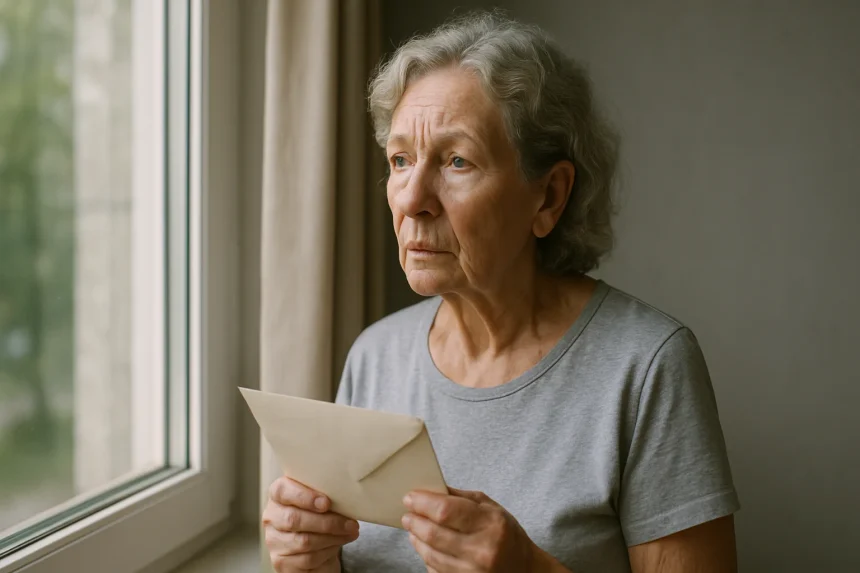|
Getting your Trinity Audio player ready...
|
Have you been wondering when WASPI compensation will finally be paid? You’re not alone. Thousands of women across the UK are eagerly awaiting a resolution, having faced significant setbacks due to state pension changes.
The Women Against State Pension Inequality (WASPI) campaign has brought this issue to national attention, demanding justice for 1950s-born women who were affected without sufficient notice. Recent government announcements and a reopened review have reignited hope, but many questions remain unanswered.
From Parliamentary debates to legal battles, the journey towards compensation has been long and emotionally draining for those impacted. With millions of pounds and lives at stake, it’s essential to understand the current landscape, what’s been promised, and what could realistically happen next.
In this blog, we break down the most critical updates, timelines, and potential outcomes so you can stay informed and prepared for what lies ahead.
What Is the WASPI Campaign About and Who Is Affected?
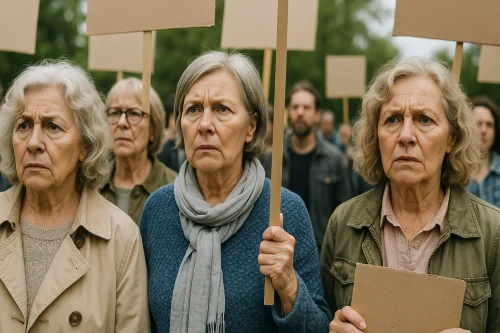
The WASPI campaign stands for Women Against State Pension Inequality and was launched in 2015 to fight for justice for women born in the 1950s. These women faced sudden and significant increases in their state pension age, without proper communication from the government.
Many were expecting to retire at 60 but discovered they’d have to wait until 65 or 66, with little time to prepare financially. These changes originated from the 1995 Pensions Act, which aimed to equalise the state pension age between men and women.
However, while the law was introduced early, the Department for Work and Pensions (DWP) was criticised for not providing timely, direct communication to those affected.
The campaign does not oppose the equalisation itself, but rather the way the changes were introduced and communicated. According to the Parliamentary and Health Service Ombudsman (PHSO), this amounted to maladministration.
Key facts about the WASPI campaign and affected women:
- Approximately 3.6 million women born between 6 April 1950 and 5 April 1960 are affected
- Some had their pension age delayed by up to 6 years
- Many claim they were never notified properly
- The issue is about lack of notice, not just the pension age change
- WASPI women argue this has caused financial hardship and disrupted retirement plans
The campaign’s demands focus on fair and fast compensation, not full restitution of missed pensions. While some women want full repayments, WASPI’s official goal is a financial redress for the maladministration proven by the Ombudsman. This distinction is important as it shapes the legal and political approach to the matter.
Why Is the Government Reviewing the Compensation Decision Now?
After previously rejecting the recommendation for compensation, the government has recently announced a review of its decision, prompting renewed attention to the WASPI case.
The reason behind this reconsideration is the discovery of previously undisclosed evidence, a 2007 Department for Work and Pensions (DWP) report evaluating pension forecast letters.
Work and Pensions Secretary Pat McFadden stated in Parliament on 11 November 2025 that this document had not been shared with his predecessor, Liz Kendall, when the decision to deny compensation was made. In the interest of transparency and fairness, the government decided to reassess the evidence.
However, Mr McFadden was clear in stating that this review does not guarantee compensation will be awarded. He acknowledged the public’s frustration and urged patience while the evidence is fully considered.
The government also intends to check whether any other crucial documentation was overlooked during the original decision-making process. This move comes just ahead of a major legal challenge by the WASPI campaign.
What Has the Ombudsman Recommended for WASPI Women?
In March 2024, the Parliamentary and Health Service Ombudsman (PHSO) concluded a multi-year investigation into how the DWP handled state pension age changes for 1950s-born women.
The findings were damning the DWP had failed to communicate the changes accurately and promptly, which denied women the ability to plan for retirement.
As a result, the Ombudsman found the DWP guilty of maladministration and recommended that affected women should be compensated. The report did not have the legal power to enforce payment but clearly urged Parliament to intervene and devise a redress scheme.
The compensation levels proposed ranged from £1,000 to £2,950 per woman, depending on the degree of hardship suffered.
However, the Ombudsman clarified that not every woman born in the 1950s would automatically qualify, as eligibility would depend on the specific impact the maladministration had on their lives.
Despite the report’s weight, the government initially rejected its findings, sparking outrage and further legal action.
What Are the Possible WASPI Compensation Payment Dates?
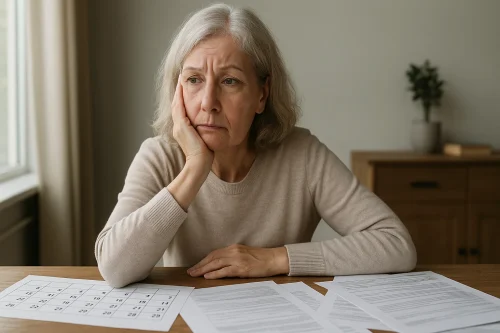
If you are trying to understand when WASPI compensation might finally be paid, the timeline is still uncertain. The government has revisited its earlier refusal, but it has not committed to a payment date or even confirmed that compensation will go ahead.
This section looks at the timeline from every angle so you can see the realistic windows in which compensation might be approved or paid. The current review, the court schedule, and political decisions all play a direct role in shaping when you might expect progress.
Has a Timeline Been Set?
At present, no official timeline has been confirmed by the government. Work and Pensions Secretary Pat McFadden made it clear that the reconsideration does not automatically mean financial redress will be granted.
His statement in Parliament highlighted that further checks are required to ensure no other critical evidence was missed previously.
This means the government is not prepared to commit to any timeframe for resolving the issue. For now, the process remains open ended, leaving you waiting for the outcomes of both the review and legal action.
Could the High Court Case Change the Timeline?
The pending High Court legal challenge by the WASPI campaign may significantly influence when a decision is reached. The hearing was expected to begin on 9 December and could force the government to respond more quickly if the court finds there were serious procedural flaws in the original decision.
Legal pressure may prompt faster action from ministers, particularly if the court questions the fairness of the process used to deny compensation. If the legal case proceeds as scheduled, it has the potential to shorten the delay and bring about a clearer timeline.
What Factors Are Delaying a Final Decision?
The key factors slowing down progress include the newly discovered 2007 DWP report, the need for further document checks, and the political sensitivity of compensation costs that may exceed ten billion pounds.
The government is also facing pressure from multiple sides, including campaigners, Parliament, and the courts. The involvement of fresh evidence has complicated the process, as ministers need time to evaluate what was overlooked.
These combined elements have prevented a definitive compensation date. You can expect updates once the court hearing concludes and once the government completes its review of all relevant documents.
How Much Compensation Could Each WASPI Woman Receive?

As discussions continue, one of the most important questions you are likely asking is how much money could realistically be awarded. Estimates vary because the Ombudsman has made recommendations, while campaigners and politicians have suggested different figures throughout the past several years.
The amount depends on government decisions, financial conditions, and the final judgement regarding levels of injustice. This section covers the three main elements that determine compensation amounts and provides clarity based on the latest information available.
What Amounts Are Being Discussed?
The Parliamentary and Health Service Ombudsman recommended compensation levels between one thousand and two thousand nine hundred and fifty pounds per woman, depending on the degree of hardship experienced.
These figures reflect what the Ombudsman considers appropriate for the maladministration identified during its investigation. However, campaigners argue that this amount does not reflect the true financial impact caused by delayed notification of pension age changes.
Previous political proposals, including those once mentioned by Labour in earlier years, suggested far higher sums, though these were not adopted. At the moment, the only official recommendation remains the Ombudsman’s scale.
Why is the Cost Estimated Between Three Point Five Billion and Ten Point Five Billion Pounds?
The financial estimate varies because not every affected woman would receive compensation under the Ombudsman’s criteria. If every woman born in the 1950s were compensated at the lowest recommended level, the total would be around three point five billion pounds.
If all received the highest recommended level, the figure could rise to ten point five billion pounds.
The Treasury has expressed concern about these potential costs, particularly considering the current economic environment. Senior officials and government departments have acknowledged that the financial burden of compensation is a major factor in the delay.
Will Everyone Get the Same Amount?
It is highly unlikely that every WASPI woman would receive the same level of compensation. The Ombudsman’s framework emphasises proportionality, meaning the level of injustice and the specific impact on each woman’s life would be assessed.
Some women discovered pension age changes only after leaving work while others had slightly more time to adjust their plans. These differences matter when calculating compensation.
If the government eventually approves a scheme, it would most likely follow a graded structure. This means compensation would reflect the individual circumstances experienced by each woman rather than a universal payment amount.
Is There a Legal Case Underway for WASPI Compensation?
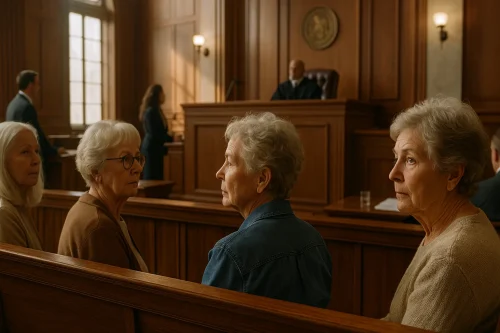
A major legal case is currently in progress and it plays a crucial role in influencing when compensation could be paid. The WASPI campaign launched a legal challenge after the government originally rejected the Ombudsman’s recommendation for financial redress.
This legal pressure is part of what prompted the government to reconsider its decision. You may have seen this discussed in news reports when the High Court granted a cost capping order that allowed the campaign to move forward.
The legal challenge centres on whether the government acted lawfully when it dismissed the Ombudsman’s recommendation and whether it properly considered all relevant evidence.
The discovery of a 2007 DWP document, which was not shown to former Work and Pensions Secretary Liz Kendall, has become a key element in the case.
This document evaluated the effectiveness of pension forecast letters and could influence the court’s assessment of how the government handled its decision making.
The government has informed the court that new evidence has come to light and that it intends to retake its decision on compensation. However, the WASPI campaign continues to seek legal advice on the implications for its judicial review.
Below summarizes the situation so you can better understand the context:
- The judicial review was expected to begin in December
- The government is reassessing its refusal based on new evidence
- The outcome of the court case could affect the timeline for compensation
- Campaigners believe the case may pressure the government to act faster
The legal case remains one of the most significant influences on when a final decision will be reached.
What Are the Government’s and Labour’s Positions on Compensation?
The government’s current position on WASPI compensation is under review, following the discovery of overlooked evidence. Work and Pensions Secretary Pat McFadden has clarified that while the decision is being reassessed, this does not confirm that compensation will be awarded.
His statement reflects a cautious approach, aiming to manage expectations while respecting the seriousness of the issue. McFadden also indicated that more document checks are ongoing to ensure no further key materials were excluded previously.
On the Labour side, the position has shifted in recent years. In 2019, Labour pledged up to £58 billion in compensation as part of its election campaign. However, no such commitment appeared in the 2024 manifesto.
Chancellor Rachel Reeves later expressed concerns over affordability, pointing out that the £10.5 billion cost could impact other public services. Labour’s move to reopen the case is seen as an effort to address past oversights, but it has stopped short of guaranteeing any payouts so far.
What Should You Do If You’re a WASPI Woman?
If you’re one of the 3.6 million women affected by the state pension age changes, it’s important to know where you stand and what you can do. While no formal compensation process exists yet, you can still take steps to stay informed and involved.
The WASPI campaign continues to fight for redress, and your support can help keep pressure on the government.
You do not need to apply for compensation at this stage, as no official application process has been announced. WASPI themselves have warned against scam websites and social media offers claiming to help with compensation claims. These are not legitimate.
Here are actions you can take now:
- Join the official WASPI campaign via their website to stay informed
- Sign up for updates from trusted sources like WASPI or major news outlets
- Avoid scams offering to help with claims for a fee
- Contact your local MP to voice your support for fair compensation
- Prepare documentation that shows how the changes affected you, should a scheme open in the future
Staying active in the campaign and aware of legal developments will help you act swiftly if and when compensation is approved.
What Happens If a WASPI Woman Has Already Passed Away?
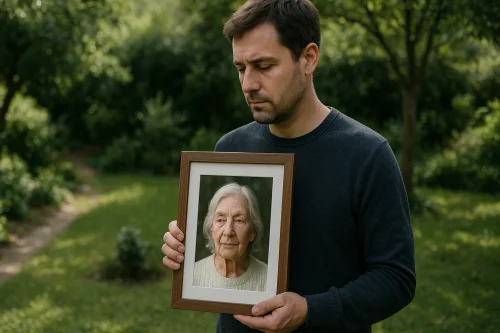
For many families, this question brings emotional weight. Given the long delays in resolving the issue, a significant number of WASPI women have sadly passed away without seeing justice.
The campaign group has stated that it is their firm position that the estates of deceased WASPI women should receive compensation if and when it is awarded.
This issue is important not just morally but legally. WASPI argues that without such a provision, the government would benefit from its own delay, effectively denying justice to thousands of women simply because of time.
Although no official redress scheme has been set up yet, the matter of eligibility for the families of deceased women is expected to be a major topic when Parliament finally debates any compensation framework.
Currently, it is still unknown whether Parliament would approve posthumous payments. However, the Ombudsman’s recommendation did not exclude deceased individuals, and campaigners have made it clear that this must be considered in any final scheme.
What’s Next in the WASPI Compensation Battle?
The path ahead for WASPI compensation is likely to be shaped by several factors, both legal and political. With the government agreeing to review its original refusal and a major High Court case scheduled, the coming months will be pivotal.
You can expect increased parliamentary scrutiny, campaign pressure, and media attention, particularly around key dates such as the court hearing in December.
Although the government has not committed to compensation, the fact that they are reconsidering the issue after nearly a decade of resistance marks significant progress. Campaigners are urging swift action and clarity, arguing that justice delayed is justice denied.
To understand what might happen next, keep these points in mind:
- The judicial review could influence the government’s position
- Parliament may debate a formal compensation framework in 2026
- Media coverage and public support are expected to rise again
- More MPs are now expressing public support for the WASPI cause
- Families of deceased WASPI women may push for inclusion in any scheme
The next stage is still uncertain, but with fresh evidence, legal pressure, and public interest converging, a turning point in the campaign may be within reach.
Key WASPI Compensation Milestones
Understanding the history behind the WASPI movement helps you see why this campaign has gathered so much momentum. The issue spans decades of legislation, oversight, protest, and political promises.
Below is a simplified timeline of events to help you stay informed on how the campaign evolved, what has already happened, and why the current moment is so crucial.
Each milestone in the table below represents a critical shift or development in the WASPI movement:
| Year | Event | Description |
| 1995 | Pensions Act passed | Raised women’s state pension age from 60 to 65 |
| 2011 | Acceleration legislation | Increased state pension age for women to 66 |
| 2015 | WASPI campaign founded | Women Against State Pension Inequality was launched to protest the inadequate notice |
| 2021 | Ombudsman finds DWP guilty | PHSO concludes DWP was guilty of maladministration |
| 2024 | Final Ombudsman report released | Recommended compensation between £1,000–£2,950 |
| 2025 (Nov) | The government agrees to re-take the decision | Pat McFadden announces a review of the initial refusal |
| 2025 (Dec) | High Court hearing expected | Legal challenge by WASPI campaign could influence government action |
This timeline shows the long-standing nature of the injustice and the steps now being taken toward a possible resolution.
Conclusion
If you’re one of the millions affected by the WASPI pension age changes, it’s understandable to feel uncertain and frustrated. For many years, the push for fair treatment seemed ignored, but recent developments offer renewed hope.
With the government reconsidering its previous decision and legal actions mounting pressure, the conversation is no longer stalled, it’s moving forward.
No final decision has been made, and no payments are guaranteed just yet. But staying informed, supporting the campaign, and preparing for a potential compensation framework are the most proactive steps you can take right now.
The truth is, every moment counts, and so does every voice raised in support of fairness for WASPI women. Justice has been delayed, but it may not be denied.
FAQs
What is the WASPI compensation issue all about?
It concerns 3.6 million women born in the 1950s who were not properly informed about the rise in their state pension age. The campaign calls for compensation due to maladministration by the Department for Work and Pensions (DWP), as confirmed by the Ombudsman.
Is the government now agreeing to pay WASPI compensation?
Not yet. The government has agreed to review its previous refusal, but it has not confirmed that compensation will be paid.
When will WASPI compensation be paid, if approved?
There is currently no fixed payment date, as the government is still in the process of reassessing evidence. A High Court case scheduled for December 2025 could help move the process forward.
Who qualifies as a WASPI woman?
Women born between 6 April 1950 and 5 April 1960 who were impacted by changes to the state pension age without sufficient notice qualify. You’re considered a WASPI woman if the pension age increase disrupted your retirement planning due to poor communication.
Can families of deceased WASPI women receive compensation?
WASPI campaigners argue that compensation should be extended to the estates of women who have passed away. However, final terms would be decided by Parliament if a scheme is approved.
How much could each WASPI woman receive in compensation?
The Ombudsman recommended payouts between £1,000 and £2,950 depending on the severity of the impact. The total government cost could reach up to £10.5 billion.
Is it safe to apply for compensation now?
No official compensation process exists yet, and the WASPI group warns against scams offering to help with claims. It’s best to wait for formal government announcements and avoid sharing personal details online.


